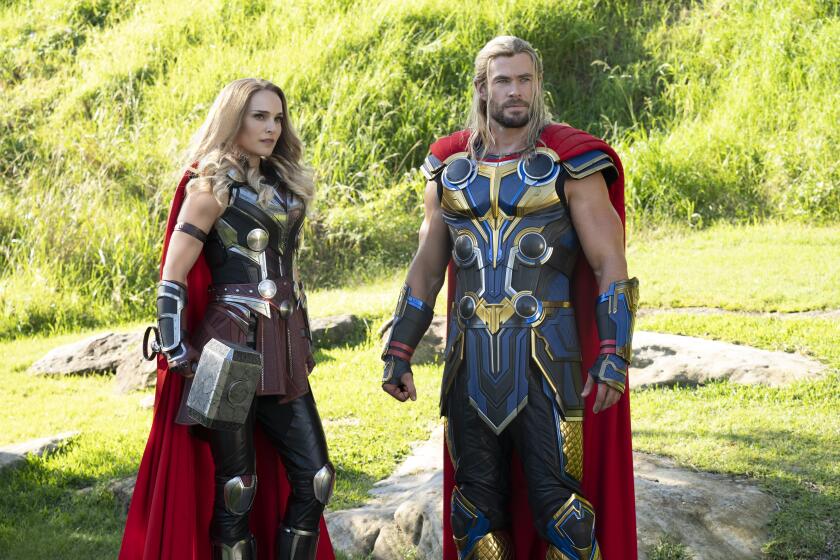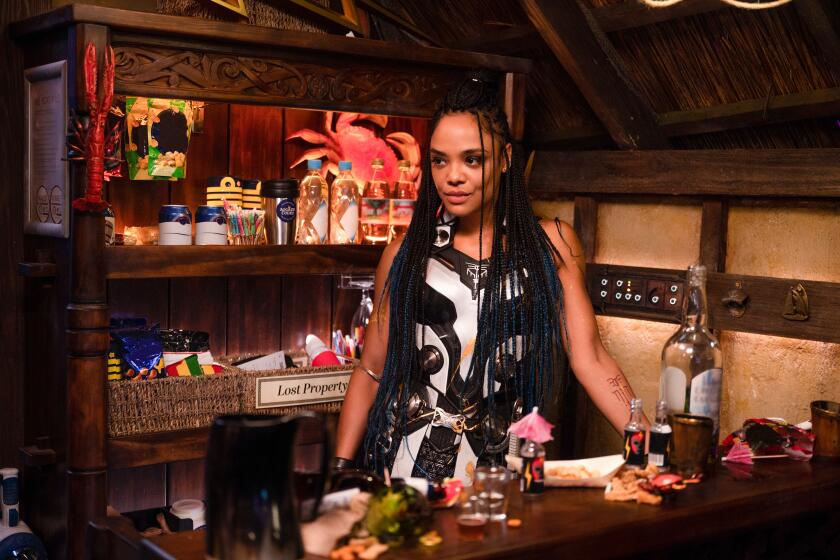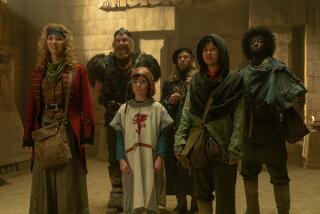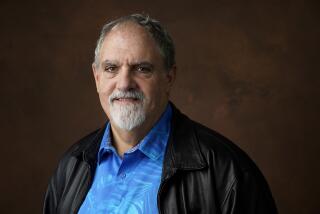How Taika Waititi transformed the role ‘Thor’ plays in the MCU

- Share via
It can be argued that no Marvel character has had a bigger glow-up than Thor, who, over 11 years in the Marvel Cinematic Universe, has gone from self-serious, self-centered prince of Asgard to the silly, self-deprecating nomadic hero he is today.
Played by Chris Hemsworth over the course of nine films, the character’s newfound vitality can largely be attributed to the direction of Taika Waititi, whose bold vision helped make “Thor: Ragnarok” (2017) the most beloved and successful of the character’s stand-alone films. Now “Thor: Love and Thunder,” in theaters July 8, reunites the namesake hero with “Ragnarok” ally Valkyrie (Tessa Thompson) and former beau Jane Foster (Natalie Portman).
In a departure from the sober “Thor” (2011) and “Thor: The Dark World” (2013) (directed by Kenneth Branagh and Alan Taylor, respectively), Waititi’s outings with the character are punctuated by flashy set pieces, epic music scores and nonstop jokes.
“There’s a sense of chaos and unpredictable nature that he embodies so wonderfully,” said Hemsworth of the director. “It’s infectious, being with him on a set. His enthusiasm is a childlike wonder and fascination with storytelling and he encourages adventure and fun.”
Natalie Portman’s Jane Foster is reborn as the Mighty Thor in this overstuffed, under-realized new Marvel entry from “Thor: Ragnarok” director Taika Waititi.
“It’s a very different experience working with other directors,” he added. “Wonderful for different reasons but, I’ve got to say, working with Taika is unlike anything I’ve ever done before.”
“It was a very loose and fun set,” agreed Portman. “Taika really creates that environment. I think he makes it his mission to make sure that everyone has a great time every day and remembers that they’re there to play. Every day we felt like a group of friends messing around.”
“There’s so many things about his natural way of working that I really love, and one of them is playing lots of music,” said Thompson. “I think energetically, music is so unifying. There are so many people on our sets, so music is one really visceral way to put everyone in relatively the same space — we’re all hearing the same thing and having a sonic experience — and I think that’s a way in which a cast and a crew bonds. It lifts energy and spirits. And I love his taste in music, it’s very similar to mine. We listen to a lot of Bowie and Prince and Talking Heads.”
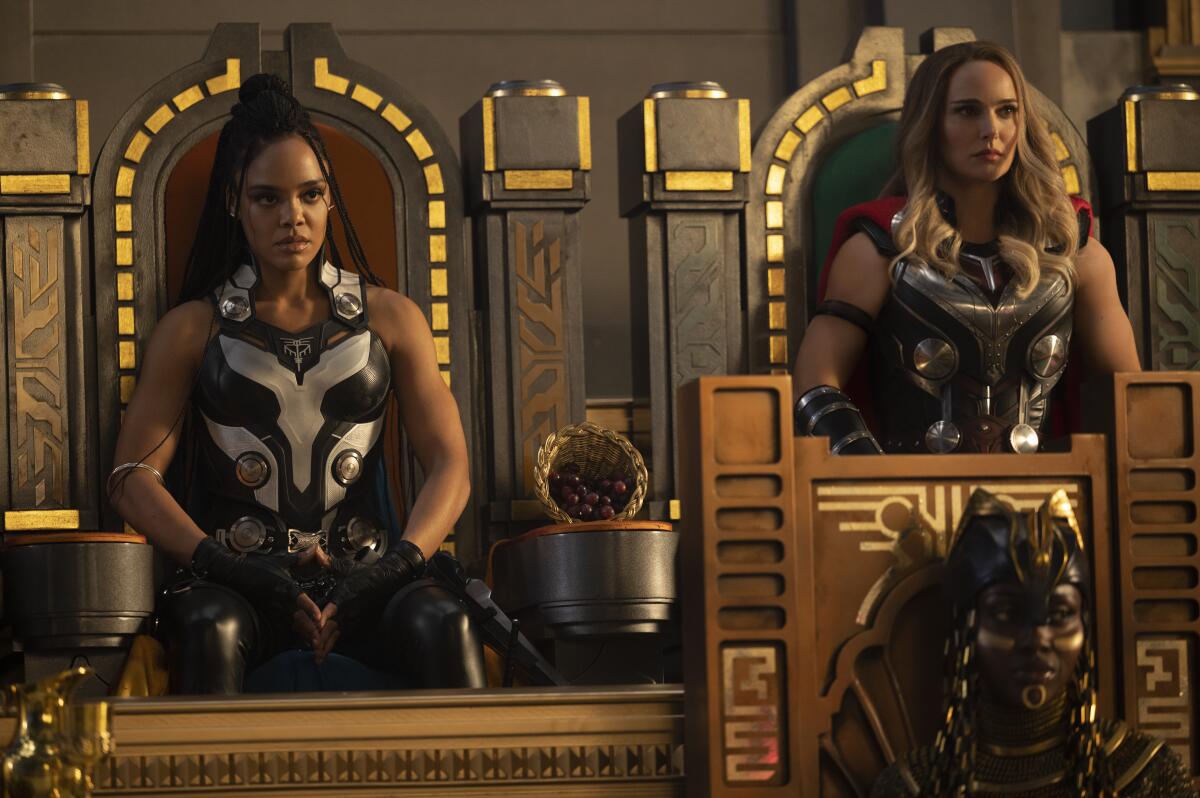
One of Waititi’s greatest tools in creating a sense of limitless possibility for his cast is encouraging improv on set. “I like to sit right near the actors,” he said. “For some reason, the bigger the stage, the further away they put you from the actors. So I [sit] next to the camera and just talk to them. I imagine I’m at a party overhearing a conversation and I just interject and butt in. I’ll start throwing some lines and if an actor is responsive to that, that’s great. If they don’t like being told what to say, then I’ll back off. Luckily, everyone on this was very responsive and came to the party on that.”
“I think sometimes actors are afraid of places where there’s too much improvisation because what if you go blank, what if you don’t have a thing to say?” said Thompson. “But with Taika, you always have someone yelling something for you to say, so you never feel alone in that process. It’s like a safety net. We’re always lifting each other up, and it just feels like a ball that we’re rallying back and forth to each other.
“I love it because it also gives you so much agency to write character,” she added. “Sometimes you have the ability in improvisation to really flesh out elements of your character that just don’t exist on the page, and certainly there was the opportunity to do that this time around. Taika pitched me some things early on, I got to pitch him back, and it was nice to be more integral to the process of figuring out how she might have grown as a character since we saw her last. It’s also just so fun to see the imagination of my friends.”
“With certain things, there’s a purity to the script that needs to be honored and you need to stay truthful to that,” said Hemsworth. “With a Taika Waititi film, there’s a seven-hour version that he then takes away and assembles into a coherent, fun story. I love it — it helps create unpredictable energy. As the actor, you’re not sure where it’s going to go, therefore the audience is also guessing, which keeps them on their toes.”
For Portman, who was new to working with Waititi, that modus operandi was like a breath of fresh air. “It was really wild to get to reenter [the franchise] with a totally different perspective because of Taika’s way of working,” she said. “He so wants to have every moment be spontaneous and creative. It’s a really different process than any other movie I’ve made, not to mention any other ‘Thor’ I’ve made. To have this combination of the familiar, because I’m friends with both Chris and Tessa, and then also to have this new experience going in with Taika and also coming in as a superhero, [was wild].”
Despite hopes Valkyrie would ‘find her queen’ in ‘Thor: Love and Thunder,’ the character remains single. Tessa Thompson and Taika Waititi weigh in.
While improv is a powerful tool, “I think it’s dangerous to expect that you’re going to solve all your problems with improvising,” said Waititi. “But it’s definitely something that helps to freshen up the room, to keep the energy alive.”
For Thompson, one of the biggest challenges that comes with improv is making sure not to break character. “I really had trouble on the last one with Jeff Goldblum,” she said. “There are moments in ‘Thor: Ragnarok’ where I can see I’m so close. It was really hard sometimes for us to get through scenes; we had to reset a lot. I think that becomes the test for if we’re in the pocket that we want to be in, which is like, is one of us close to breaking? Can you almost crack up your teammate, your sparring partner? Because then you know, ‘OK, we might have happened upon something golden.’”
Another challenge is maintaining a foreign accent while the dialogue is constantly changing. “The accent is something that I’ve been working with for a while,” said Thompson. “But typically when you’re performing with a dialect, you have a script that you’ve been working on for months. Sometimes you even have more than months and you know what you’re going to say so you can work on all of those sounds.
“But on our films, we do so much improvisation so it’s doubly hard, because every day you’re being tasked with something new and you have to live inside of that dialect. ... But that’s the joy. I love being on that precipice and being excited and challenged by material and by the process of how the thing is made. Making movies where there’s this much improvisation, this much thinking on the fly every day, you have to really bring it, which is fun.”
More to Read
Only good movies
Get the Indie Focus newsletter, Mark Olsen's weekly guide to the world of cinema.
You may occasionally receive promotional content from the Los Angeles Times.
